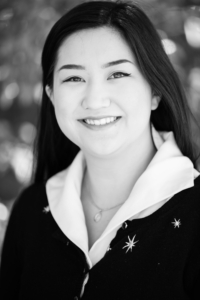Sentiments in Clay
Artist Statement
My work explores the shared human conditions of love and suffering by creating emotional human forms. I seek to create faces and bodies that are entirely unique, so these sculptures are made without the use of models. My focus lies in the internal aspect of the human condition rather than the external; I create works that are a reflection of my inner self, emotions, and the hidden figures within. Because these sculptures were made from my inner spirit, they contain their own life.
I am also deeply inspired by historic events and the resulting resilience of humankind. My sculpture, The Arboresque Woman, was inspired by the trees that survived the atomic bombings of Hiroshima and Nagasaki. My grandparents are survivors of the atomic bomb in Hiroshima. When I was young, I visited Hiroshima with them, and the images of surviving trees and the Atomic Bomb Dome have stayed in my mind ever since. The Arboresque Woman reflects upon the tragic events she has borne witness. The resilience of nature and humankind is a common theme in my work.
In works like, The Hands of Time, I convey the delicate nature balance between life and death. In life, death is constantly brushing our fingertips. And yet, in death, our connection to life makes it so that we never truly die. The sufferings of past lives are tied with our present lives.
The bust, Freedom, is inspired by life after WWII for Japanese Americans. In 1945, Japanese Americans were released from the Internment Camps and allowed to return to their homes. But were they truly free? Many Japanese Americans returned to homes and businesses that were looted. Some of them never overcame the loss caused by their internment and lived a life of homelessness. But others, like Ruth Asawa and George Nakashima, became famous artists and craftsmen that were influential figures in modern art and design. This piece functions as both a decorative bust and a garden planter. Currently, it is empty like the homes many Japanese Americans returned to find. But where there is loss and emptiness, there is the potential for growth.
While these artworks are based on historical and personal experiences, their themes are universal. There is always a connection between current and past events, and as our world changes, artworks evolve to reflect our current experience. In uncertain times, we can look back upon the resilience of our predecessors to remind us of the human will to not only survive but to grow through adversity.
Hallie Maxwell is a ceramic figurative sculptor based in Meridian, ID. She received her BA in art from California Lutheran University. Continuing work outside her visual art, she dedicates her time educating people about art made by Japanese Americans in the Internment Camps. Please visit halliemaxwell.com to see more of her work.





